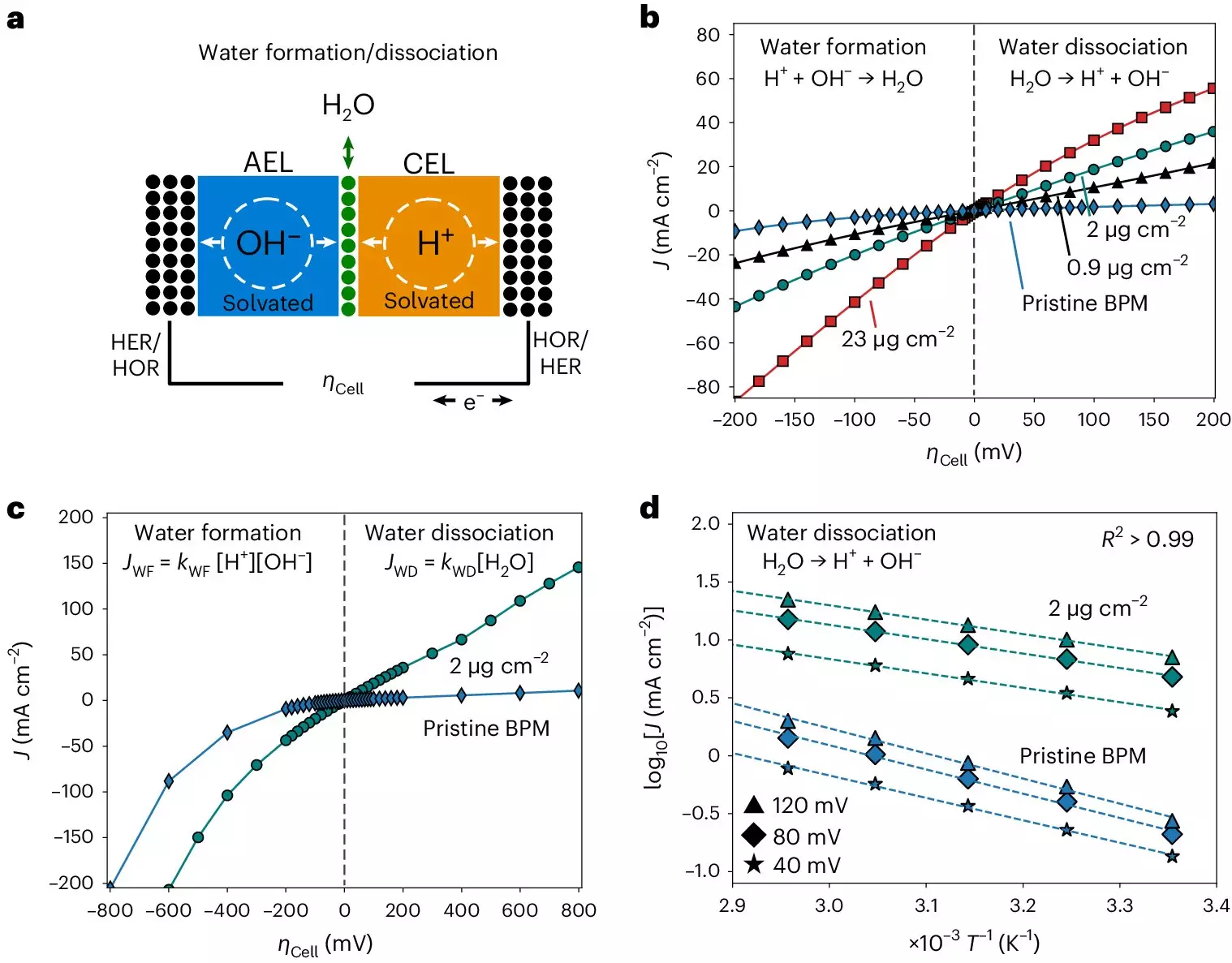Bipolar membranes play a crucial role in various technologies, such as electrolyzers and hydrogen fuel cells. These specialized ion-conductive polymers consist of two distinct layers – the cation-exchange and anion-exchange layer, each carrying an opposite charge. Despite the widespread use of bipolar membranes in energy-related applications, their underlying working mechanisms and ion solvation kinetics remain a topic of ongoing research and exploration.
A recent study conducted by researchers at the Fritz-Haber Institute of the Max Planck Society delved into the intricacies of water dissociation and ion solvation kinetics at the interface between the two layers of bipolar membranes. The findings of this study, published in Nature Energy, shed light on crucial aspects that could potentially revolutionize the fabrication and integration of bipolar membranes in various devices.
In their quest to unravel the fundamental principles governing bipolar membranes, the research team, led by corresponding author Sebastian Oener and first author Carlos Gomez Rodellar, faced several challenges in the experimental setup. Rodellar devised a system that enabled the study of ion kinetics in bipolar membranes while minimizing the interference from the crossover of electrolyte ions. This system involved applying continuous pressure on the membrane electrode assembly with metal oxide catalysts within the bipolar junction, allowing for precise control over temperature variations and gas composition during the experiments.
The measurements obtained through these experiments provided valuable insights into the activation entropy and enthalpy within the bipolar junction, revealing bias-dependent relationships that influence interfacial capacitance. Additionally, the research team observed that solvation kinetics in bipolar membranes exhibit unique characteristics that are independent of the catalysts’ chemical composition but are instead attributed to entropic changes in the interfacial electrolyte. These findings have significant implications for enhancing the performance of bipolar membranes in applications such as electrodialysis, CO2 electrolyzers, and hydrogen fuel cells.
Beyond the immediate implications for bipolar membranes, the study also highlighted the role of entropic changes at liquid-solid interfaces in designing novel electrocatalysts for specific chemical reactions. Oener emphasized the ongoing exploration of various applications for bipolar membranes, including collaborations with other research groups to investigate different types of fuel cells and electrodialysis systems. The team aims to address fundamental questions, such as the water formation reaction in bipolar membranes running in the forward direction, while also pursuing projects related to ion solvation in electrocatalysis.
The research conducted at the Interface Science Department of the Fritz Haber Institute represents a significant step towards understanding the intricate processes involved in bipolar membranes and their potential applications in energy conversion technologies. By unraveling the mysteries of ion solvation kinetics, this study paves the way for the development of more efficient and versatile bipolar membranes that could transform the landscape of sustainable energy production.


Leave a Reply
You must be logged in to post a comment.